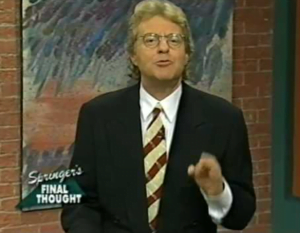* “The Internet” is pretty sure the quote above is attributed to the ancient Greek playwright Sophocles. However, others claim there’s no way to verify he said this. See what I mean about believing everything you see online?
I’ve had more than my share of encounters with craptastically lame online guidance masquerading as helpful “tips.” This can happen to anyone, in any industry
Sketchy advice.
It’s the most unforgivable of all the flagrant social media attention-seeking online posting tactics – trying to attract views by assuming authority on a subject, but then puking forth slipshod, suspect information or guidance.
Such a red flag popped up the other day in a LinkedIn group for sound design and audio production professionals. One poster, presumably a fellow pro, immediately hooked me by proclaiming
“Sure enough, here are 10 tips for good voiceover in the studio.”
I eagerly began reading.
What a letdown. Not one of those tips proved original or insightful. Worse, some were dead wrong…or at least debatable, depending on who you consult in the profession.
This particularly grated on my nerves because I had just returned from the annual conference of World Voices Organization (WoVo), the leading professional association of voiceover talent. WoVo is enthusiastically devoted to promoting best practices across the industry. This includes studio etiquette, training and technical standards for pristine “broadcast quality” audio recording. (For those of you sticklers who just read “broadcast quality” and rolled your eyes — yeah, I know. Some audio experts I know hate that term. I’ll use it anyway.)
Two of WoVo’s most esteemed senior members also happen to be two of the most knowledgeable and experienced voiceover audio production gurus in the business. Deeply immersed for decades in all things related to gear, software, studio set-up, technique and troubleshooting, they’ve advised generations of voice actors; their word is gospel and we trust them implicitly.
Having met and heard both speak at length, I’d like to contrast their sage counsel with selected alleged “tips” from our self-styled expert over in my LinkedIn group. We’ll start with an easy one.
“Use a pop filter to reduce the popping noises that can occur when you say certain words.”
A pop filter is the circular screen you sometimes see placed in front of a microphone. The “popping noises,” formally called “plosives,” happen when you form words beginning with letters that expel bursts of air from your lips, like “P.” If you say the word “pickle” into the mic too directly or forcefully, that burst of air hits the mic and it registers as a jarring and disruptively loud “PUH” noise. The pop filter prevents plosives by dispersing the air.
Lots of pro voice talents have a pop filter at the ready, and that’s fine.
However, here’s a nifty little nugget of knowledge I’ve picked up that you don’t typically hear in these generalized advice pieces: proper mic placement renders a pop filter completely unnecessary, because it eliminates plosives from ever occurring in the first place. How? Simple. Suspend your microphone upside-down with the diaphragm a few inches away, roughly aligned with the bridge of your nose. A good cardioid condenser mic is sensitive enough to pick up the nuances of your voice, and at the same time it’s away from a direct line with your mouth…so no pops.
As a bonus, the upside-down mic opens up plenty of room to gesticulate with your hands and move around a bit. Better voiceover coaches encourage physicality as you perform – “talk with your hands.” That physicality energizes and enhances your read and its authenticity.
“Use quality headphones to monitor your voice while recording and ensure it is captured clearly.”
Oh boy. This one gets more debate and opinion in the voiceover world than you’d think, with some rather strident viewpoints both pro and con.
High-end headphones are fantastic for precision audio editing in post-production, but talk to enough coaches and you’ll hear this: while you’re recording, take your headphones OFF.
Why? Many voice talents, especially those with low, deep baritones, tend to listen too closely to themselves and fall in love with the resonance of their own voice filling their ears. (I did that when I was in radio. I’ve been warned to cut the crap with that when doing voiceover!) So impressed are they with leaning into the sound of their dulcet timbre that it distracts them from the tone and intention of the read and impedes the overall quality of the performance.
If you’ve set your levels correctly in the first place and are properly running your audio chain, you shouldn’t need to be “monitoring.” And again, mic placement: if it’s right, you’re being “captured clearly” already. Set it, and forget it. Focus on your performance.
“Control your breathing and avoid inhaling deeply through your nose to avoid unwanted breath noises.”
NO! This isn’t guided meditation. Nor is it time to get paranoid because you’ve been spooked into thinking the simple act of breathing is going to ruin the recording. If you’re preoccupied with modulating your breathing and worrying about “unwanted noise,” your performance will suffer. Focus on the copy and delivering what your client needs. Breath issues can be cleaned up in post-production, if at all. There is a healthy debate in the VO world over just how much editing of breathing needs to happen, because it risks sounding unnatural. Good voice coaches also work with talent on techniques for smoothing out phrasing, all while breathing naturally and unobtrusively. No breath “control” necessary.
Look, humans breathe. Get over it. Take the breath, and chill.
“Listen to the recordings carefully and make adjustments to improve the quality of your voice if necessary. If there is a producer or sound engineer present, work with them to get the best possible result.”
First, you can’t “improve the quality of your voice.” What does this even mean? If you were hired for the gig, someone liked your vocal quality just the way it is. More importantly, someone thought you had the performance chops to do the job…not just a nice set of pipes.
Unless you suddenly get raspy or nasal, phlegm caught in your throat, excessive clicks due to dry mouth or some other obvious problem, vocal “quality” isn’t relevant. If you misread a word, or didn’t deliver the attitude or phrasing the producer wanted, they’ll tell you.
“Quality of your voice” is a rather vague and weaselly phrase as used here, making this entire statement confusing, empty fluff. Again, this fixates on one’s sound while ignoring what you uniquely bring to interpreting copy and performing.

As the late Jerry Springer used to say at the end of each episode:
“So, what have we learned here today?”
Conclusion
The overtly generic recommendations in this “Top Ten” style listicle ring shallow and unsophisticated. Clearly the writer avoids intricate detail or analysis, likely masking his inability to offer any. Part of me suspects he’s posting simply for the sake of posting, hoping for a quick hit to capture “likes” or perhaps followers. It’s a lazy, half-assed attempt to throw together something…anything…that appears credible, accuracy and subtleties be damned.
And that’s bothersome. It puts amateurish, incorrect information out into the world, misleading readers with falsely packaged “expert” advice.
Regrettably, the online space is congested with this kind of dime store drivel, and I imagine this isn’t the case only in the realm of voiceover guidance. If you want real answers, prepare to spend time and effort digging deep, seeking out and vetting true experts. It’s the only way.
Don’t trust anything you read or hear online – including this post – unless you can verify it yourself.
It’ll be time well spent.




